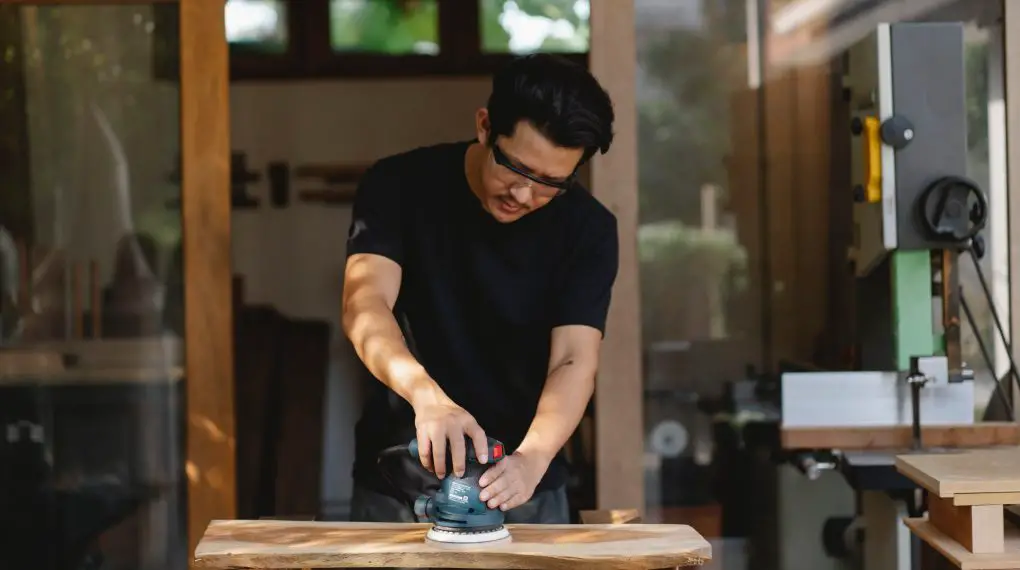If you’re looking to achieve a smooth and refined wood finish, knowing how to sand after polyurethane is crucial. This step-by-step guide will walk you through each stage of the process, ensuring that even beginners can master the art of post-polyurethane sanding.

Why You Need to Sand After Applying Polyurethane
When you apply polyurethane, you’re creating a protective layer that can sometimes contain imperfections like bubbles or dust particles. Sanding helps remove these issues and prepares the wood for additional coats or for the final finish.
How to Sand After Polyurethane: What You’ll Need
- Fine-grit sandpaper (320 to 400 grit)
- Medium-grit sandpaper (220 to 240 grit)
- A sanding block or an orbital sander
- Clean rags
- Soft brush or a vacuum cleaner
- Tack cloth
- Protective gear (mask and goggles)
Step 1: Safety First
Sanding produces fine dust particles that can be harmful to your respiratory system. Additionally, the mechanical action of sanding can cause particles to fly into the air, posing a risk to your eyes.
How to Do It
- Select an Appropriate Mask: Opt for a dust mask that can filter out fine particles. A N95 respirator is a good choice.
- Wear Safety Goggles: Standard safety goggles are sufficient to protect your eyes from flying debris.
- Put on Your Protective Gear: Before beginning the sanding process, securely fit your mask and goggles.
Step 2: Prepare the Surface
Sanding a surface that’s not completely dry can result in a smeared or uneven finish. It can also lead to the sandpaper getting clogged, making the process ineffective.
How to Do It
- Wait for the Polyurethane to Dry: As a rule of thumb, wait at least 24 hours. The drying time can vary depending on the type of polyurethane used and the conditions of the environment (temperature, humidity, etc.).
- Perform a Touch Test: Lightly touch the surface to confirm that it’s dry. If it feels tacky, give it more time.
Step 3: Choose the Right Sandpaper
The grade of sandpaper affects the smoothness of the finish and how quickly material is removed from the surface.
How to Do It
- Understand Sandpaper Grit Numbers: The grit number represents the coarseness. Higher numbers are finer, while lower numbers are coarser.
- Choose Your Grit: For post-polyurethane sanding, a 320 to 400-grit paper is generally ideal for most projects.
Step 4: Attach Sandpaper to Block or Sander
A poorly attached sandpaper can slip or bunch up, leading to an uneven finish.
How to Do It
- Lay the Sandpaper Flat: Place your sandpaper flat on the sanding block or orbital sander.
- Secure the Sandpaper: Many sanding blocks and orbital sanders have mechanisms for holding the sandpaper in place. Make sure it’s securely attached.
Step 5: Start Sanding
The pressure and motion you use will directly impact the quality of the finish.
How to Do It
- Use Light Pressure: Too much pressure will remove too much material, leading to an uneven surface.
- Use Circular Motions: Move your sanding tool in smooth, circular motions to avoid creating any scratches or gouges.
Step 6: Clean the Surface
Any remaining dust can affect subsequent layers of finish or paint, leading to a less-than-perfect final product.
How to Do It
- Use a Soft Brush or Vacuum: Sweep away the bulk of the dust.
- Wipe with a Tack Cloth: This will remove any residual particles, ensuring a perfectly clean surface.
Step 7: Inspect and Repeat
Inspecting ensures that you’ve achieved the level of smoothness you desire.
How to Do It
- Visual Inspection: Look for any scratches, marks, or uneven areas.
- Touch Test: Run your hand over the surface to feel for any rough patches.
- Repeat if Necessary: If the surface isn’t up to your expectations, repeat the sanding process, starting from Step 5.
For more articles on sanding, click here: Sanding: Your Full-Circle Guide to Smooth Mastery
How to Sand After Polyurethane: Conclusion
Sanding after applying polyurethane is an essential step for achieving a flawless finish on your wood projects. By following this guide, you can ensure a smooth and durable surface that will last for years to come.